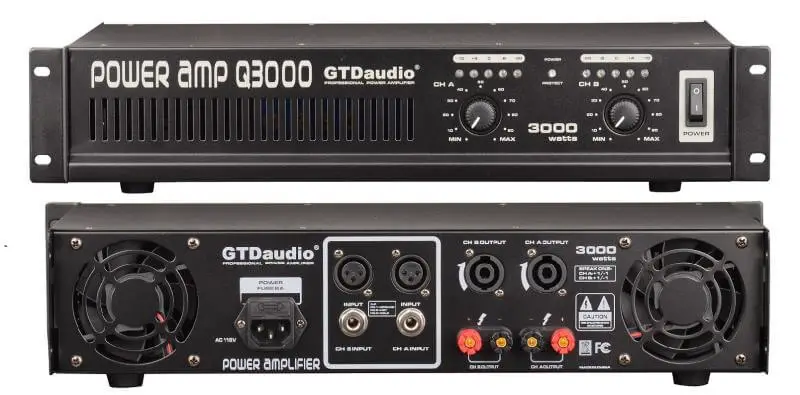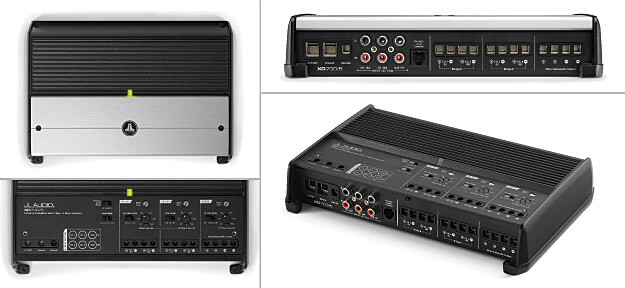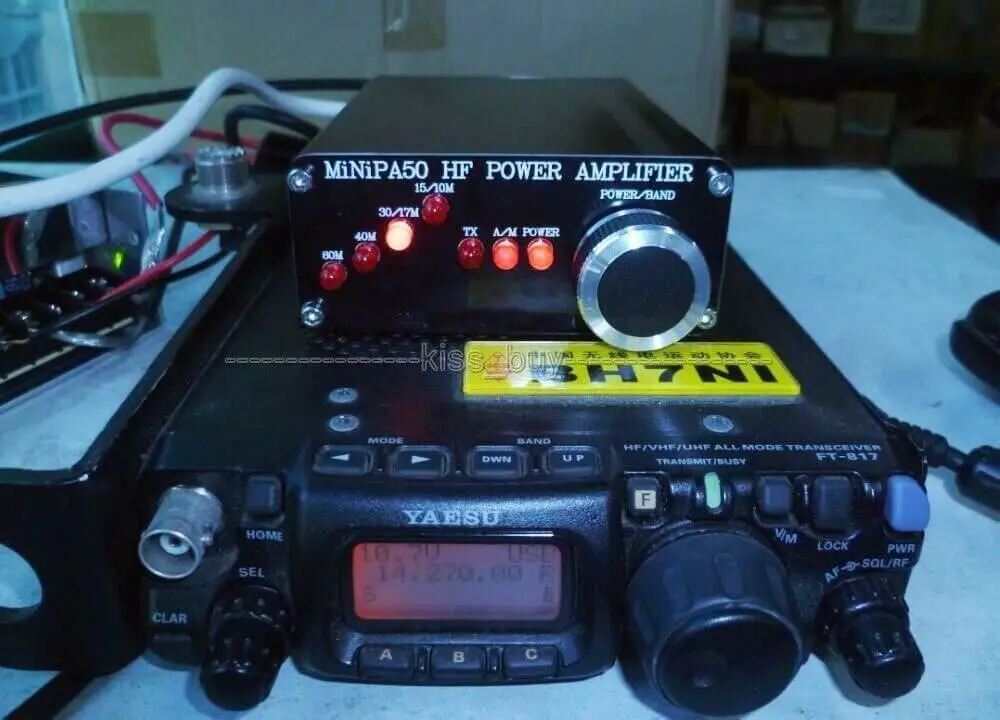Many times, we are not able to hear the voice coming out of the loudspeaker. It mainly happens when there is a large gathering.
That means the voice coming out of loudspeakers is not audible to a big area. For this purpose, we need to raise the strength of the signal.
This process of increasing power or strength of the signal so that it can be heard by the crowd is called Amplification. And the electronic device used for this purpose is a Power Amplifier.
What is a Power Amplifier
A Power amplifier is defined as an electronic device that provides sufficient power to an output load to drive a speaker or other power device, typically a few watts to tens of watts.
The main purpose of the amplifier is to raise the power level of the input signal, to get the large power at the output.
To match the input signal shape with larger amplitude, the power amplifier takes the energy from the power supply & controls the output.
Power Amplifier Basics:
It is the most used amplifier in the electronics circuit and is also known as large signal amplifiers.
The main features of the large-signal amplifiers are the circuit power efficiency, impedance matching to the output device and the maximum amount of power that the circuit is capable of handling.
Power Amplification
As per the law of conservation of energy, the power amplifier cannot amplify power. The power amplifier is just a DC to AC power converter whose action is controlled by the input signal.
During operation, it takes DC power from the supply connected to the output circuit and converts it into useful AC signal. The type of AC power developed at the output of the power amplifier is controlled by the input signal. Thus, whatsoever power is developed is fed to the load i.e. loudspeaker.
Power Amplifier Properties
The performance of the power amplifier is understood on the basis of quantities like collector efficiency, power dissipation capability, and distortion. We will discuss all such properties one by one. Read on to learn more
Distortion
The change in the shape of the output waveform of the input waveform of an amplifier is known as Distortion.
When the output wave shape is not an exact replica of the input wave shape, the amplifier is said to have some distortion.
As compare to the voltage amplifiers, power amplifiers handle larger signals. Hence in these amplifiers, the problem of distortion occurs immediately. So in this type of amplifier, we have to take care of this factor a lot.
Collector Efficiency
The collector efficiency or efficiency of the collector of an amplifier is defined as the ratio of AC output power to the DC input power or zero signal power of a power amplifier.
Collector efficiency tells us the percentage of DC power converted into AC power by the amplifier.
For example, if the DC power supplied by the source is 10W and AC output power is 4W, then the collector efficiency is 40% i.e. the greater the collector efficiency, the better is the amplifier.
Collector efficiency Equation Derivation
Mathematical expression equation of collector efficiency is given as:
η = AC power output / DC power input
η = Pac / Pdc
As we know,
η = Vce Ic / Vcc Ic
Therefore, collector efficiency is also given as;
η = [Vce (peak to peak) * Ic (peak to peak)] / 8 Vcc Ic
Power Dissipation capability
During operation, the ability of power transistor to dissipate the heat developed in it is known as its power dissipation capability.
As we know, power transistors used in a power amplifier carry large current during operation. This heats up the collector junction.
The rise in temperature influences the operating conditions of the transistor. Therefore, the transistor used must be capable of dissipating this heat to the surroundings.
Classification of Power Amplifier
When power amplifier handles large signals, sometimes many of them are driven so hard by the input signals that the collector current reaches either in the cut-off or in the saturation regions during its peak values.
As we know audio waves have small frequency range and radio waves have a large frequency range. Mainly these are divided into two categories according to the range of signals they amplify.
Audio Power Amplifier
These are known as the small-signal amplifier. These can generally raise the power levels of signals having audio frequency range i.e. 20 Hz to 20 kHz. In an audio playback system, it is the electronics’ final stage.
Radio Power Amplifier
These are known as the large signal amplifiers. These raise the power levels of signals that have the radio frequency range.
It basically converts a low-power radio-frequency signal into a higher power signal and amplifies a specific frequency or narrow band of frequencies & rejecting all other frequencies.
On the basis of mode of operation i.e. the portion of the input cycle during which the collector current flows through the circuit, it is classified into four classes:
- Class A
- Class B
- Class C
- Class AB
The detailed post about these classes are published now:
[irp posts=”1301″ name=”Power Amplifier Circuit, Classes and its Characteristics”]
Hope you all like this article. For any suggestions please comment below. We always appreciate your suggestions.





Well-done
Thanks Chris for stopping on my blog and dropping your valuable comment. Always feel free to ask any question related to electronics.